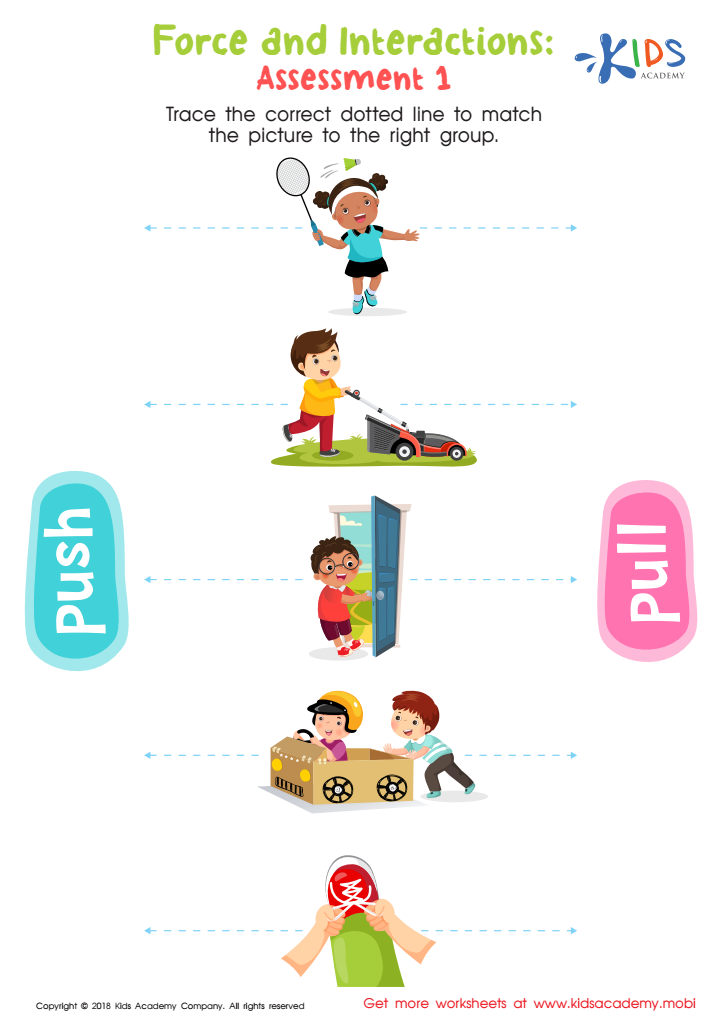Fun and Educational Physical Science Worksheets for Kids Ages 4-6 - Knowledge Check and Activities | Kids Academy
4 filtered results
-
From - To


Force and Interactions: Assessment 1 Worksheet


Light and Sound: Assessment 1 Worksheet


Light and Sound: Assessment 2 Worksheet


Force and Interactions: Assessment 2 Worksheet
Physical science is a fascinating subject that explores the wonders of the natural world, encompassing topics from the foundational laws of physics to the complex interactions in chemistry. It's a discipline that not only furthers our understanding of the universe but also enhances our problem-solving and analytical skills. However, mastering these concepts often requires more than just reading textbooks and listening to lectures. This is where Physical Science Worksheets Activities with Answers come into play, proving to be an invaluable resource for learners.
Engaging with Physical Science Worksheets Activities is significantly beneficial for several reasons. First and foremost, these activities are meticulously designed to reinforce the theoretical knowledge acquired through study. They provide practical scenarios and problems that require the application of concepts, facilitating a deeper understanding and retention. This hands-on approach transforms abstract ideas into tangible experiences, making learning both effective and enjoyable.
Furthermore, these worksheets often come with answers, serving as an immediate feedback mechanism. This is crucial in the learning process, as it allows students to identify and correct their misunderstandings promptly. The feedback loop encourages self-assessment and independent learning, empowering students to take charge of their education. Additionally, it saves valuable time for educators, allowing them to focus more on guiding students rather than on grading assignments.
Moreover, Physical Science Worksheets Activities are versatile tools that cater to diverse learning styles. Whether a student prefers visual learning, hands-on experiments, or solving numerical problems, there's something for everyone. This inclusivity ensures that no learner is left behind, making science accessible and enjoyable for all.
In conclusion, Physical Science Worksheets Activities with Answers are more than just supplementary materials; they are a bridge connecting theoretical knowledge with practical application. They encourage active learning, foster critical thinking, and build confidence, making them an indispensable part of science education. Through these activities, students not only learn about physical science but also develop essential life skills that prepare them for future challenges.
 Assign to My Students
Assign to My Students




















